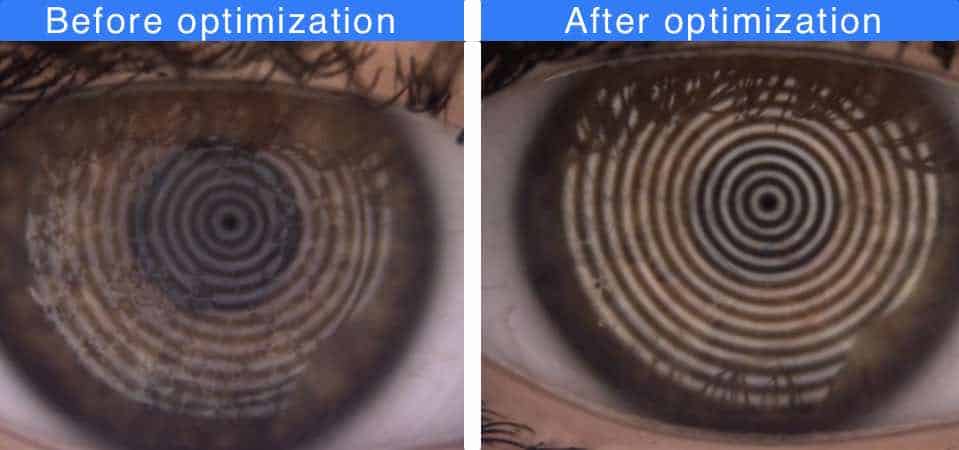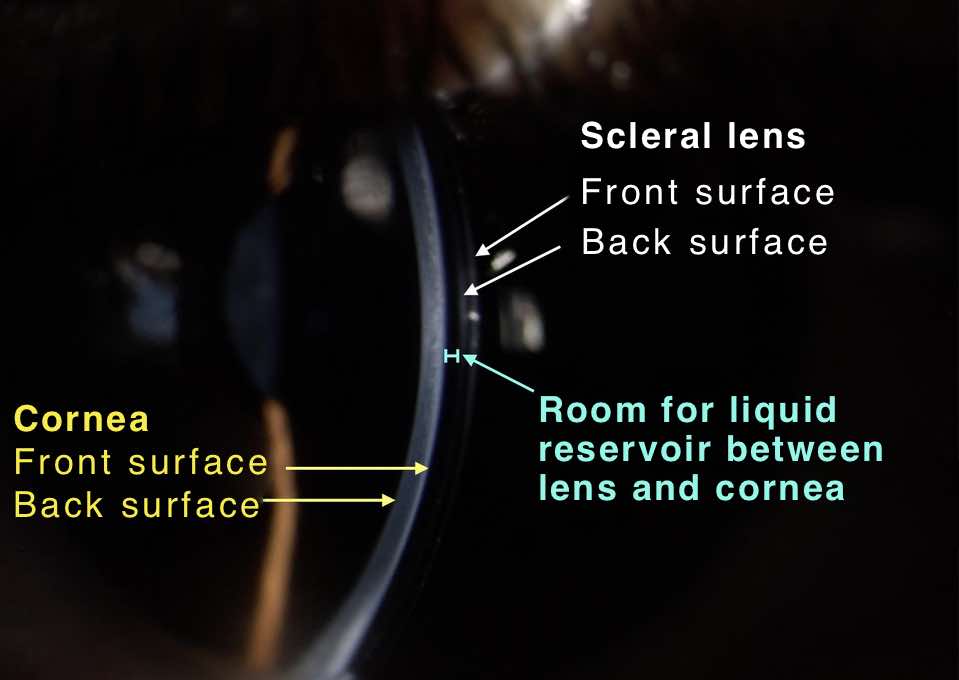Dry eyes and the correct selection of contact lenses, therefore, are a multifaceted topic that is seldom discussed so a normal person can grasp the differences between the lenses or the problems. All you can see when searching for “best contact lenses for dry eyes” are a few recommendations. But dry eyes are just the umbrella term. So does every of the contact lenses recommended for dry eyes work? No, in most cases they do not in a satisfying way for the wearer of the lenses.
Let us dive in a little deeper so you can understand what options you have when the recommended products do not get you anywhere. We need to divide contact lenses into the different basic materials to understand which works best for dry eyes or better one special case of dry eyes.
- Soft contact lenses with a higher water content
- Soft contact lenses with less water content
- Rigid contact lenses
- Orthokeratology
The Best Contact Lenses for Dry Eyes – What You Should Look For?
All of the mentioned types of contacts are used in marketing as contact lenses for dry eyes. Contacts with a higher water content feel extremely soft and oftentimes provide the wearer with the best initial comfort of wearing and less foreign body sensation compared to the alternatives.
The problems show up after 30 minutes plus usually. Then the contact lens loses some of the water in the soft material. The wetting on the lens surface becomes less stable and over time the foreign body sensation, burning eyes, or fluctuations in vision are the result. Actually, the cause is either your eyes do not produce enough tear film which is in most cases not true or the quality of your tear film especially the content of lipids in your tear film is not sufficient. The latter accounts for up to 70.3% of dry eye cases.
When there are fewer lipids found in the tear film the fluid evaporates faster and therefore produces a dry eye. The wetting on the surface of the contact lens will suffer when the tear film evaporates. Of cause in some cases, the combination of less quantity and quality can be found in some customers.

The next solution is contact lenses with lower water content. Those lenses tend to have less need of sponging your tear film to “stay in shape”. When you touch those lenses which are mostly made out of silicone hydrogel the material feels a little stiffer compared to the hydrogel lenses mentioned above. So with contact lenses that have less water content generally expect to work a little bitter for a few hours but the wetting process due to the fewer lipids are still there and will reduce the comfort wearing.
Especially when the tear film is not optimal chances are higher for deposits on the contact lens surface. Those deposits on contacts can also lead to dry eye sensations. Because your lids need to slide over them thousands of times during a day. Every little bump will probably lead to discomfort. Depending on how your tear film is mixed out of mucins, proteins and lipids a different contact lens material will work best for your dry eye case.
Protein deposition is most common in high-water-content hydrogel contact lenses, followed by low-water-content lens materials. Silicone hydrogels tend to accumulate protein the least. However, silicone hydrogel materials tend to accumulate more lipids than some conventional materials. So some eye care professionals would have to look first at your eyes to see what kind of contact lens material would work best in combination with your tear film.
All the described soft contact lenses influence your tear film. Because contacts divide the tear film into two layers: the pre-and post-lens tear film. This change leads to instability of the pre-lens tear film, thinning of pre-and post-lens tear film thickness, and increased friction between the contact lens and the ocular surface. But there are rigid contact lenses that happened to influence the tear film and especially the thickness of the tear film less.

There are little rigid contact lenses that only sit on your cornea and there are big rigid contacts called scleral lenses. When the lens material is rigid it will not sponge your tear film. Out of my experience as an optician, I can say rigid lenses oftentimes are still an option when soft contact lenses do not work anymore. With the smaller rigid contact lenses, you oftentimes need to endure more foreign body sensations while you do not have them as much with the big scleral lenses.
Scleral contact lenses are oftentimes a good alternative even when dry eye problems get severe. The reason is they are so big they work as a bandage with an added fluid reservoir between the lens and the cornea. When wetting issues are present with normal soft contact lenses they tend to change the shape and have less oxygen transmissibility even when the marketing messages say something else.
With rigid contact lenses, this will not happen because they do not change their shape. On top of that, the fluid reservoir under a scleral lens can hold a lot more fluid compared to a soft contact lens where only an extremely thin layer of the tear film is located under the lens. Soft contact lenses have a post lens tear film thickness of 2-3 μm while scleral lenses have a post lens tear film thickness of 380 ± 110 μm.
Is Higher Water Content In Contact Lenses Better for Dry Eyes?
Contact lenses with a higher water content do not work necessarily better with dry eyes. As the contact lenses sit on your eye they sponge your tear film. With a lens that has a greater water content more tear film gets pulled away from your eye and dry eye sensations come up.
While what I said is true in most cases there are some exceptions to the rule. One is the material Definitive 74 from Contamac which has 74% water content but it has unique surface wetting qualities as well as outstanding levels of water retention properties. In comparison to other soft contact lenses, the Definitive 74 loses less water and stays nicely snugged for a longer period of wearing on the eyes.
I made good experiences fitting this material to customers with dry eyes when they did not want to make the transition to sclerals or orthokeratology.
Can Contacts Help Dry Eyes?
The correct contact lens could lead to an improvement of dry eye symptoms. Especially scleral contact lenses have the ability to block dry spots on the cornea as well as constant mechanical strain on spots due to poor wetting properties. When the contact lens shields the cornea while simultaneously providing a liquid reservoir between the cornea and the lens the cells on the eyes surface are oftentimes able to recover over a certain period of time.
This way the right contact lens could in deed help with dry eyes.
Should You Wear Contacts if You Have Dry Eyes?
When you experience problems with your contact lenses constantly they are not the right choice for you. An alternative lens would work better in most cases. When people have problems with dry eyes and their contacts they usually have not tried out scleral lenses or ortho k lenses which is recommend when you should not wear normal lenses.
Can Contacts Make Dry Eyes Worse?
Contact lenses can make dry eye symptoms worse when the lens material is not chosen correctly. The wrong contact lens could lead to added friction when blinking and therefore to lid wiper epitheliopathy or staining on the eye.
In general, the experienced optician or optometrist will look at multiple things to improve on when it comes to do dry eyes and contacts. A few of them are contact lens solutions and their ingredients, contact lens care, and if your tear film could be improved with massages and warm compression to make you a happier contact lens wearer. I hope you found the information you wear looking for around contacts and dry eyes.
I wish you a great day.
